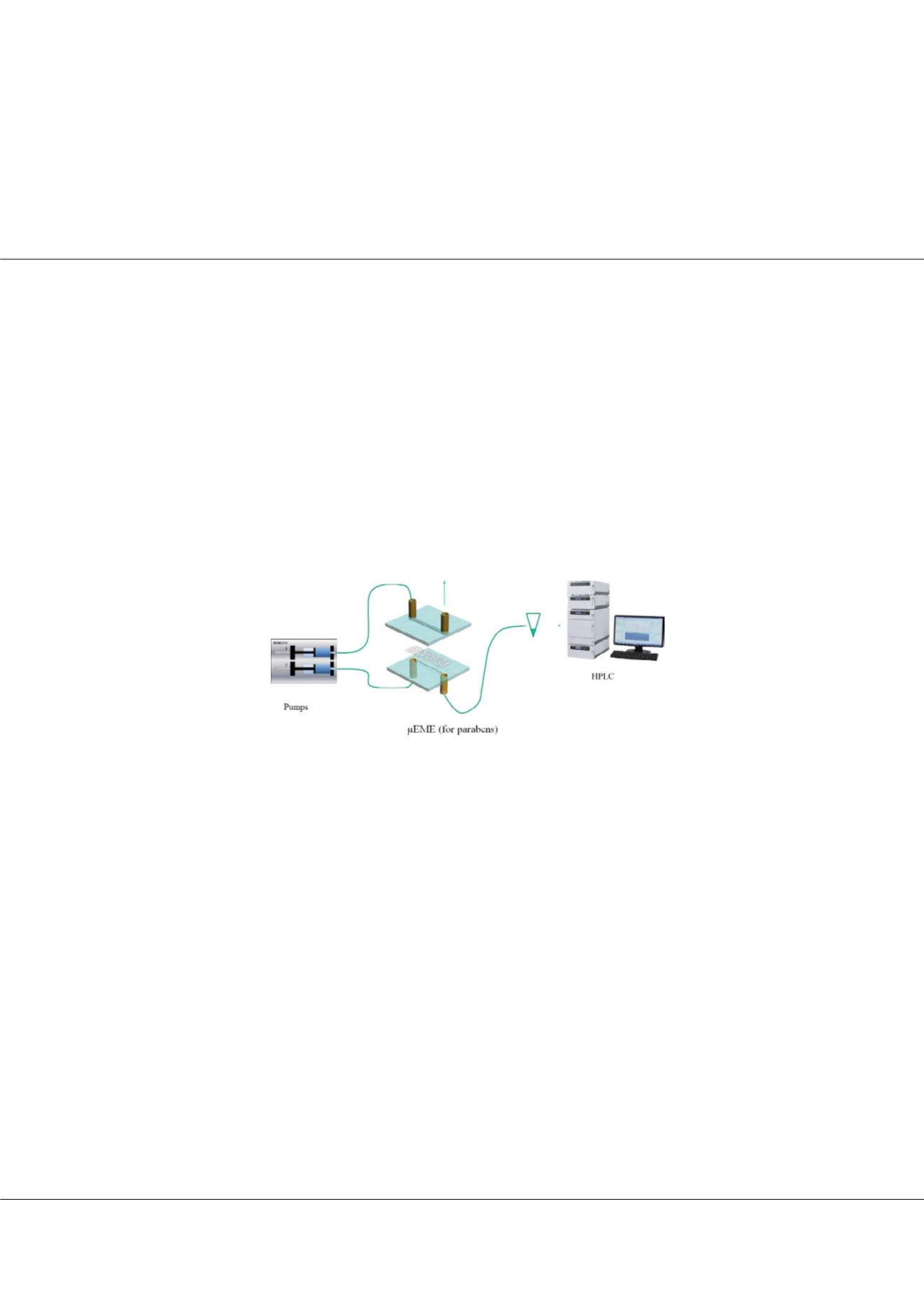

Page 76
conferenceseries
.com
Volume 8, Issue 5 (Suppl)
J Chromatogr Sep Tech, an open access journal
ISSN: 2157-7064
Chromatography 2017
August 07-09, 2017
August 07-09, 2017 | Rome, Italy
4
th
World Congress on
Chromatography
An effective microfluidic device for the extraction of fluoroquinolones using liquid phase
microextraction and its analysis by HPLC
María Ramos Payan
IMB CNM, Spain
T
his experimental work reports the first microfluidic-chip based system for liquid-phase microextraction (LPME-chip)
for the determination of fluoroquinolones in water samples. In 2011, a HPLC DAD–FLD method combined with prior
traditional hollow fiber-liquid phase microextraction was developed for the sensitive determination of eight widely used
fluoroquinolones. However, high sample volumes and longer extraction times were needed. In the recent years, miniaturization
of analytical procedures has been a tendency with the aim of reducing costs, extraction times and improving extraction
efficiencies. We present a poly (methyl methacrylate) microfluidic chip based on a double-flowworking mode for the extraction
of six fluoroquinolones in water samples. 1-octanol was used as support liquid membrane. Extraction parameters were fixed
at pH 3 (donor phase), pH 12 (acceptor phase) and 1 µL/min for both acceptor and sample flow rate; resulting in extraction
efficiencies over 40%. This technique offer faster extractions in only 5 minutes and minimum sample volume (less than 10 µL).
Figure1:
Schematic of microfluidic device. The extract collected is analyzed by HPLC.
Biography
Maria Ramos Payan has expertise in improving sample preparation techniques focused on microfluidic-chip devices as miniaturization. The novelty of her
microfluidic devices offer more advantages than the existing methodologies. The devices work either using biological and environmental samples and can be
coupled on-line to HPLC or Mass Spectrometry. She has also demonstrated the applicability of microchip devices for diagnostic diseases as diabetes. She has
worked at different institutions (University of Seville, University of Huelva, University of Lund, University of Copenhagen and University of North Carolina, USA).
Currently, she works at Microelectronic National Center of Barcelona and Universitat Autonoma of Barcelona with the aim of implementing optical detection into
microfluidic devices for multiple applications.
ramospayan@us.esMaría Ramos Payan, J Chromatogr Sep Tech 2017, 8:5(Suppl)
DOI: 10.4172/2157-7064-C1-032
















